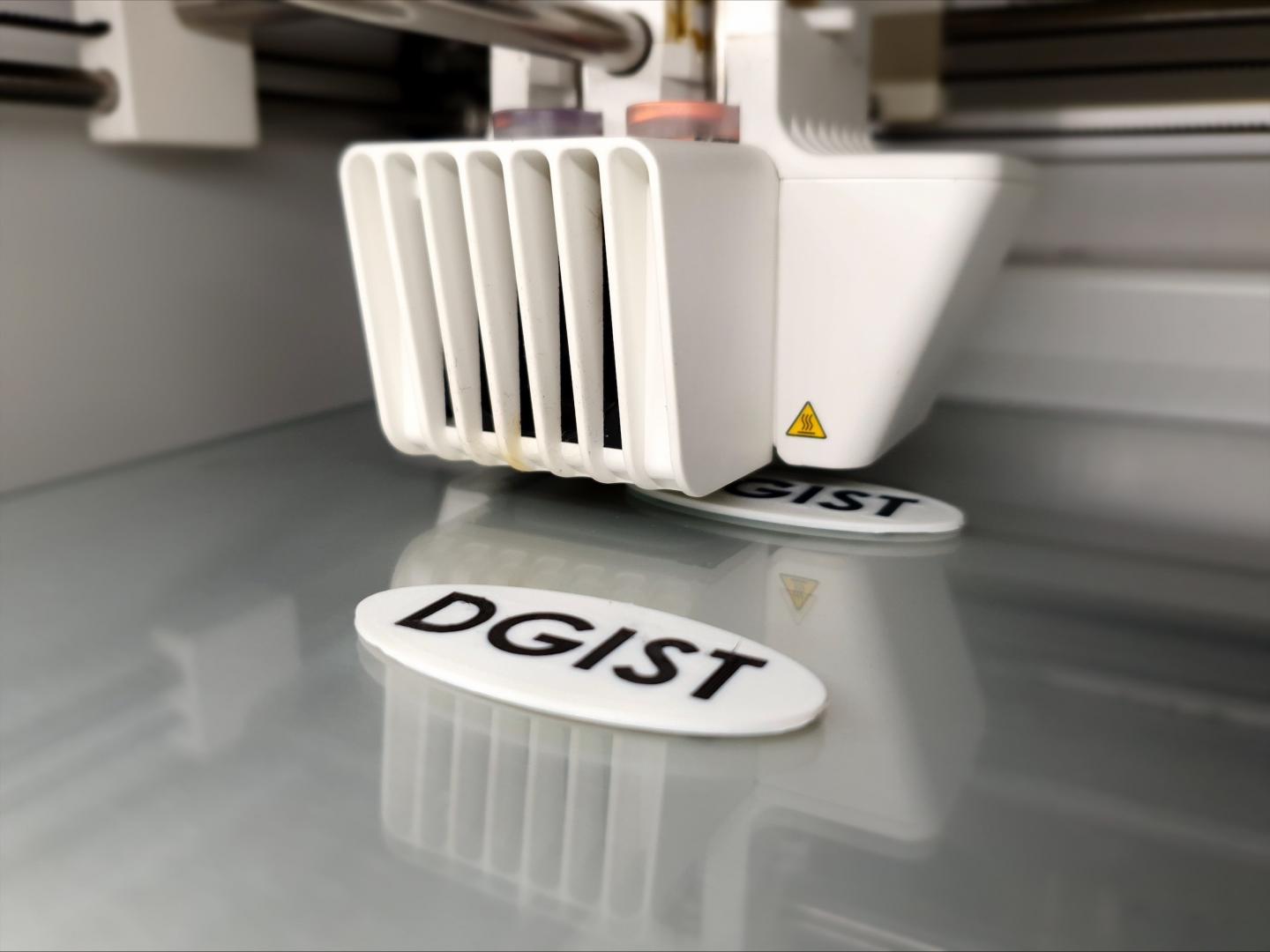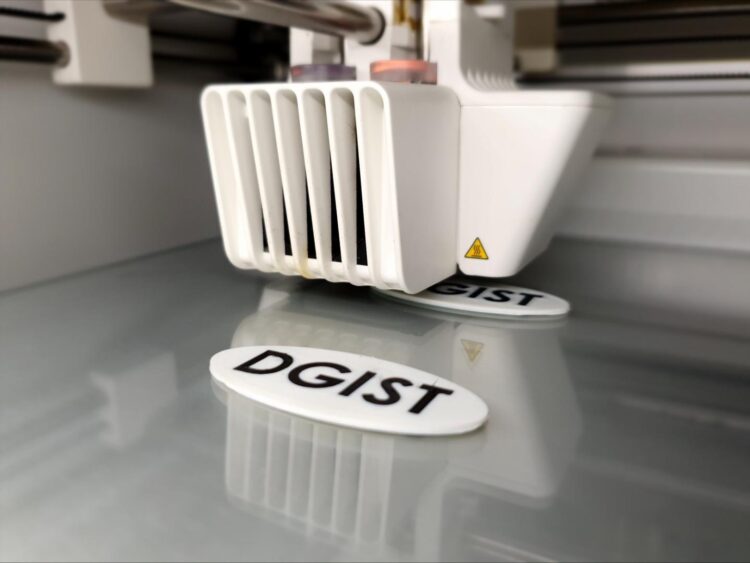Scientists develop a 3D-printed pressure sensor embedded with a temperature sensor from conductive carbon-based composites.

Credit: DGIST
The treatment of many medical issues like abnormal gait and muscular disorders require an accurate sensing of applied pressure. In this regard, flexible pressure sensors that are simple, lightweight, and low-cost, have garnered considerable attention. These sensors are designed and manufactured through “additive manufacturing,” or what is more commonly called “3D printing,” using conductive polymer composites as their building blocks.
However, all 3D-printed pressure sensors developed so far are limited to sensing applied forces along a single direction only. This is hardly enough for real world applications, which involve situations where forces can be applied along various angles and directions. Moreover, the electrical resistance of most conductive polymers varies with temperature and must be compensated for accurate pressure sensing.
In a study published in Composites Part B: Engineering, a group of scientists led by Prof. Hoe Joon Kim from Daegu Gyeongbuk Institute of Science and Technology, South Korea, have addressed this issue with a newly designed multi-axis pressure sensor coupled with a temperature-sensing component that overcomes the limitations of conventional sensors. “Our multi-axis pressure sensor successfully captures the readings even when tilted forces are applied. Moreover, the temperature-sensing component can calibrate the resistance shift with temperature changes. In addition, the scalable and low-cost fabrication process is fully compatible with commercial 3D printers,” explains Prof. Kim.
Scientists first prepared the printable conductive polymer using multi-walled carbon nanotubes (MWCNTs) and polylactic acid (PLA). Next, they built the sensor body with a commercial elastomer and sensing material with MWCNTs/PLA composite filament using 3D printing. The sensor is based on a bumper structure with a hollow trough beneath and employs three pressure-sensing elements for multi-axis pressure detection and a temperature-sensing element for calibration of resistance. The sensor could successfully calibrate both the magnitude and direction of the applied force by evaluating the response of each pressure-sensing element. This bumper structure, when installed in a 3D-printed flip-flop and a hand gripper, enabled clear distinction between distinct human motions and gripping actions.
The scientists are thrilled about the future prospects of their 3D-printed sensor. “The proposed 3D printing technology has a wide range of applications in energy, biomedicine, and manufacturing. With the incorporation of the proposed sensing elements in robotic grippers and tactile sensors, the detection of multi-directional forces along with temperature could be achieved, heralding the onset of a new age in robotics,” comments an excited Prof. Kim.
Indeed, those are some interesting consequences to look forward to!
###
Reference
Authors: Hang-Gyeom Kim1, Sugato Hajra1, Dongik Oh1, Namjung Kim2, Hoe Joon Kim1,*
Title of original paper: Additive manufacturing of high-performance carbon-composites: An integrated multi-axis pressure and temperature monitoring sensor
Journal: Composites Part B: Engineering
DOI: https:/
Affiliations: 1Department of Robotics Engineering, Daegu Gyeongbuk Institute of Science and Technology (DGIST)
2Department of Mechanical Engineering, Gachon University
*Corresponding author’s email: [email protected]
About Daegu Gyeongbuk Institute of Science and Technology (DGIST)
Daegu Gyeongbuk Institute of Science and Technology (DGIST) is a well-known and respected research institute located in Daegu, Republic of Korea. Established in 2004 by the Korean Government, the main aim of DGIST is to promote national science and technology, as well as to boost the local economy.
With a vision of “Changing the world through convergence”, DGIST has undertaken a wide range of research in various fields of science and technology. DGIST has embraced a multidisciplinary approach to research and undertaken intensive studies in some of today’s most vital fields. DGIST also has state-of-the-art-infrastructure to enable cutting-edge research in materials science, robotics, cognitive sciences, and communication engineering.
Website: https:/
About the author
Hoe Joon Kim, an assistant professor of Robotics Engineering at DGIST, is fascinated by micro/nanofabrication techniques and the integration of emerging nanomaterials with micro/nanodevices. He earned a PhD degree in Mechanical Engineering from the University of Illinois, USA. He was a post-doctoral researcher at Carnegie Mellon University’s Micro and Nano Systems Laboratory in the USA, where he worked on the development of low-power low-noise piezoelectric MEMS resonators for sensing and frequency control applications. His research areas also include piezoelectric MEMS resonators for RF wireless communication, chemical/physical sensing, and environmental monitoring.
Media Contact
Kwanghoon Choi
[email protected]
Original Source
https:/
Related Journal Article
http://dx.





